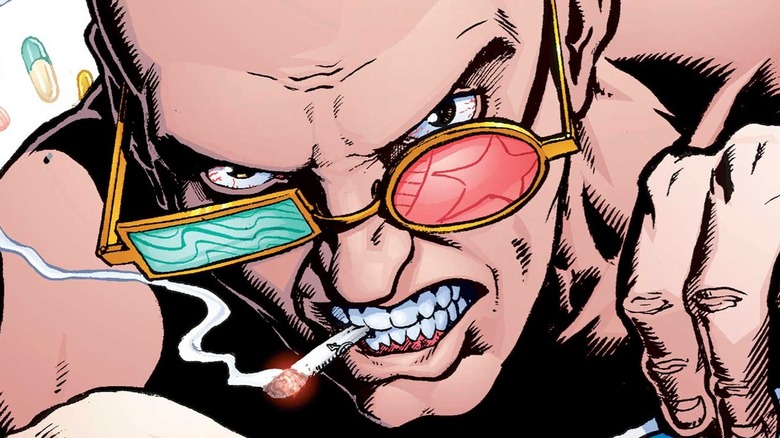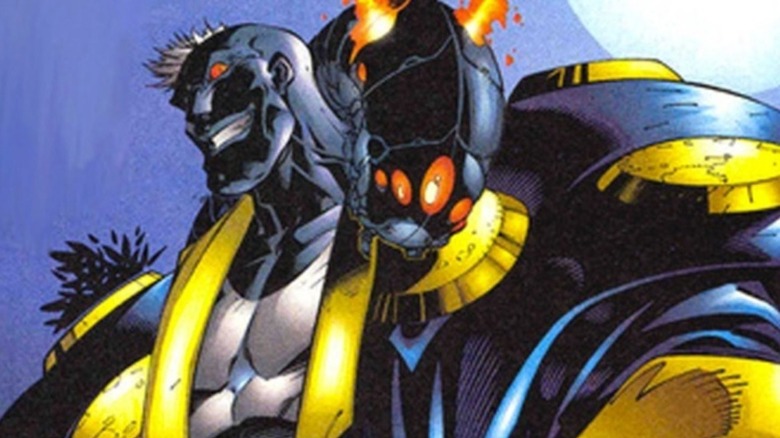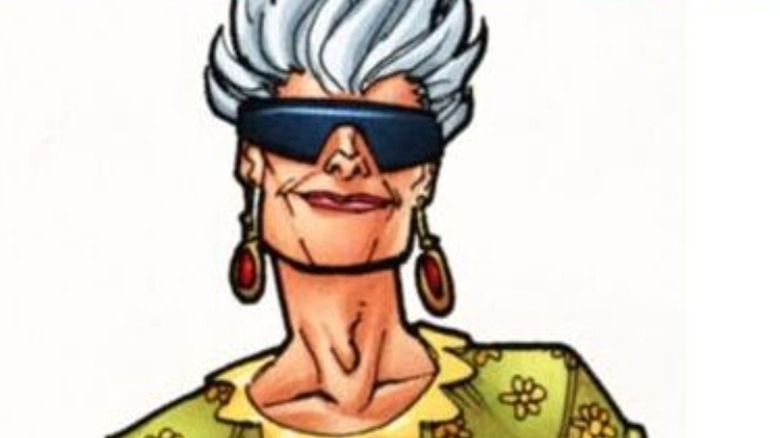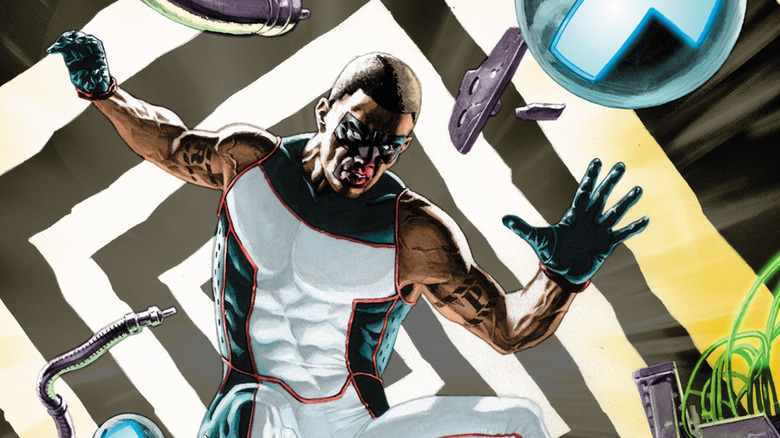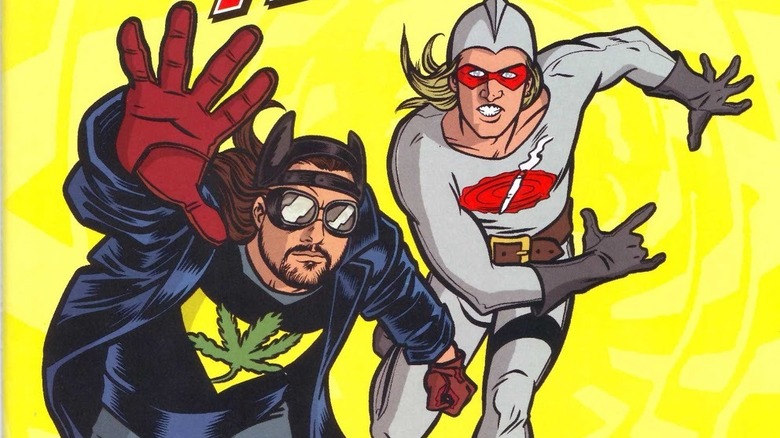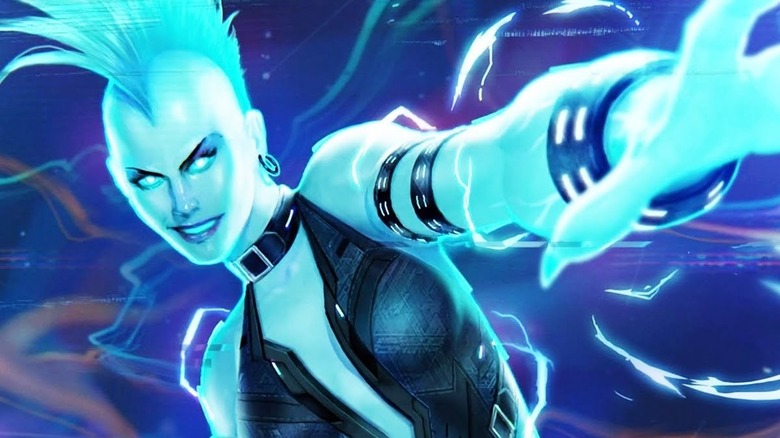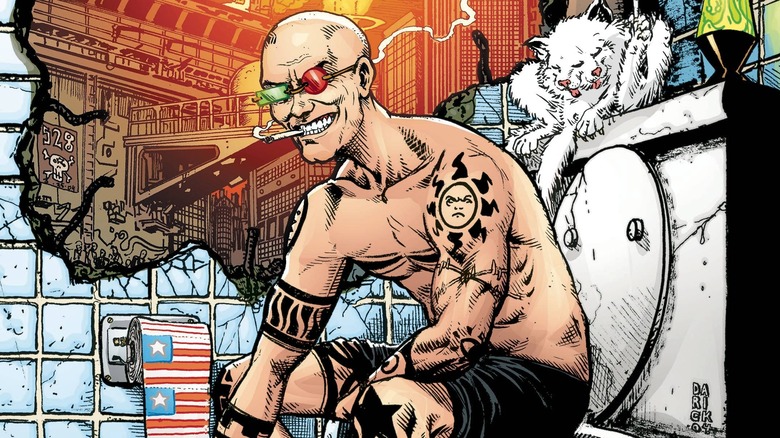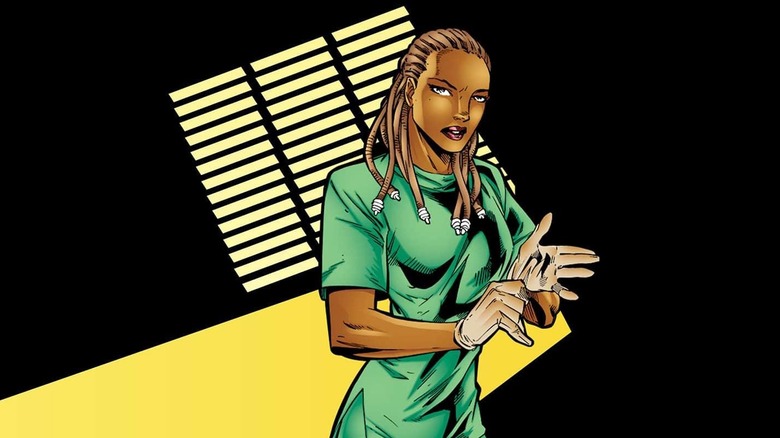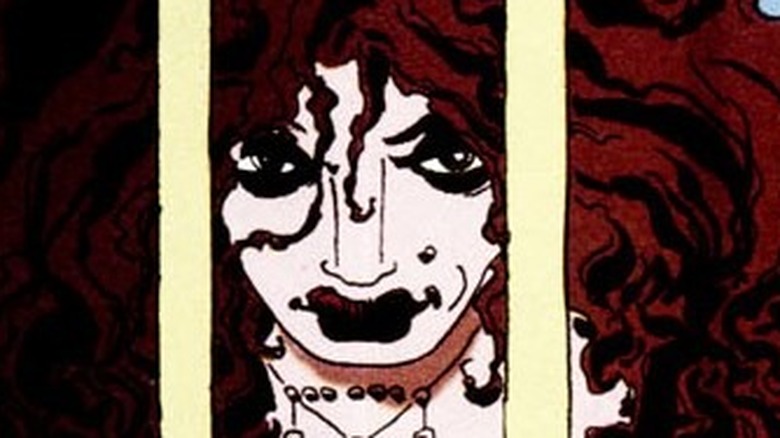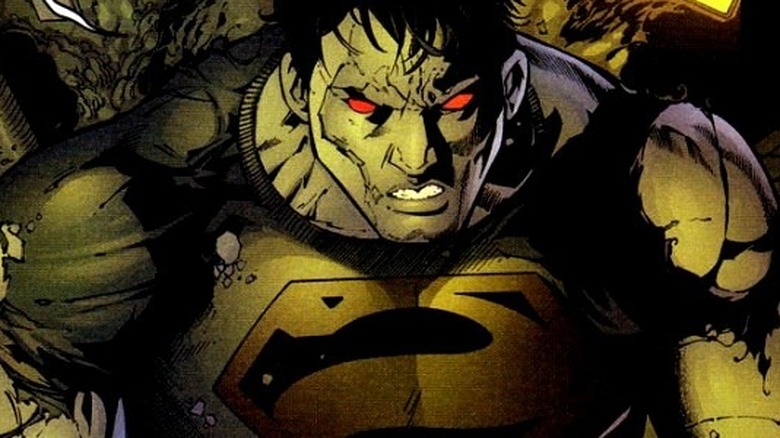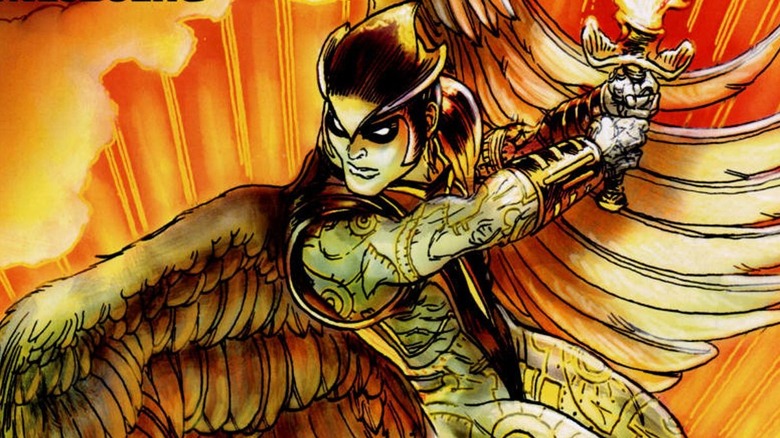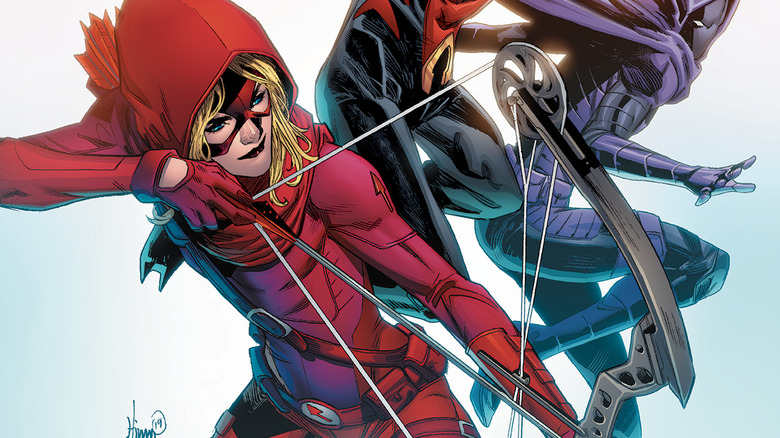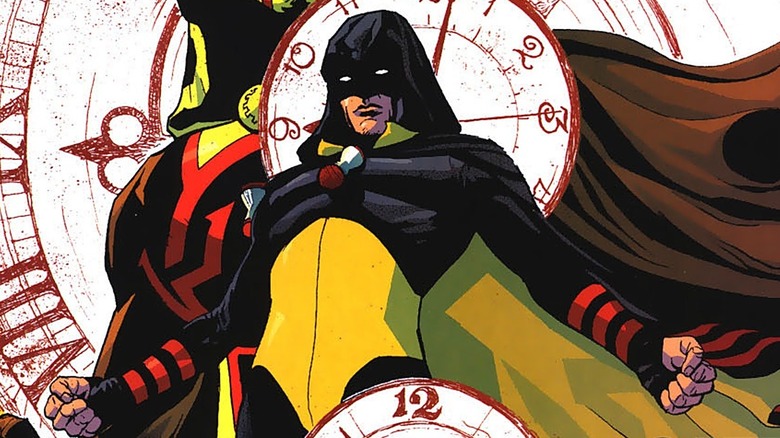Comic Book Characters Turning 25 In 2022
When some folks think of '90s superheroes, they think of dudes with big guns, big swords, and bad attitudes, flanked by female characters who all fight in either skin-tight bodysuits or lingerie. Basically, they think of Fabian Nicieza and Rob Liefeld's X-Force or one of the many other X-Men knockoffs that emerged in the shadow of the Clinton administration.
However, if we look at the notable new characters who make their first appearance in comics published in 1997, most of them don't fit that stereotype at all. In fact, the way we think about '90s comics isn't all that different from the way we think about '90s rock music. Our tendency is to fixate on Nirvana and Pearl Jam while forgetting all about The Mighty Mighty Bosstones and Chumbawamba.
Also quite like the best rock music from the end of the century, superhero comics from the '90s that stand the test of time push boundaries while championing a sense of gritty authenticity. Though wildly different, Mark Waid and Alex Ross's "Kingdom Come," and Sam Kieth's "The Maxx" both fit that particular bill. And you know what? Even if it's not a universally held opinion, we think Liefeld's "X-Force" does too.
Maybe not all the characters who made our list of top 1997 debuts push boundaries while keeping it real — but they all do at least one of those things, and we'll be darned if we won't give them credit for that. Here are comic characters celebrating 25 years of boundary-breaking in 2022.
Maggott
In the years since his underwhelming rollout, the bizarre mutant hero known as Maggott — whose given name seems to be Japheth – gained a degree or two of cultural endurance and notoriety via frequent appearances on internet lists with titles like "Weird Marvel Characters" and "Strangest X-Men."
A member of the X-Men and Generation X at various times, Maggott wields the superpower of an external, techno-organic sentient digestive system comprised of two slugs named Eany and Meany. Suffice to say, readers in 1997 didn't quite know what to make of Maggott or his two disgusting yet adorable pals. Marvel's creative team wrote him out of the main X-books, then killed him off unceremoniously a few years later.
During his decades away from the limelight, Maggott started looking less like a poorly considered concept for a new character, and more like a man and a pair of living large intestines ahead of their time. If Maggott had premiered closer to 2001 in Grant Morrison and Frank Quitely's "New X-Men," alongside similarly loveable unconventional-looking misfits like Beak and Glob Herman, readers might've reacted to him differently.
The rest of mutantkind and its fandom caught up to Maggott, and this story gets a happy ending. Thanks to the magic of Krakoan resurrection, Maggot received his overdue celebrated return back into the pages of Marvel comics in 2019, along with numerous other formerly deceased mutants.
Blind Al
Because somebody thought an old lady living with the hyper-violent and foul-mouthed Deadpool would be hilarious, Marvel added Blind Al to The Merc with a Mouth's supporting cast as of "Deadpool #1," the launch of his first ongoing title. Surely, someone accurately predicted Wade's mysterious confidant would become one of the most significant new superhero-adjacent characters to appear in 1997 — and at the time, most folks dismissed that person as insane.
Meanwhile, here we are in the post-2020 universe where Blind Al, played by Leslie Uggams, appears prominently in both of the massively popular Deadpool movies starring Ryan Reynolds. The onscreen Blind Al operates as a somewhat maternal, stabilizing figure in Wade Wilson's life, although she gives the impression that she could switch and become a profoundly unstabilizing figure at the drop of a hat if she felt like it.
Technically, Jackie "The Darkness" Estacado might have sold a few more comic books that year, but has he been in more movies than Blind Al? He has not. That makes the score between Blind Al and The Darkness tied, 1 to 1.
Your move, The Darkness.
Mr. Terrific
While the original Mr. Terrific, Terry Sloane, has been around since the 1940s, we're probably not crazy to suggest that the contemporary DC audience is much more familiar with Michael Holt. The modern-day Mr. Terrific begins his run of playing fair and fighting crime in the DC Universe as of "Spectre #54," cover dated June of 1997.
In the subsequent years, we've seen Mr. Terrific serve as chairman of the Justice Society of America, and briefly star in his own solo series as part of the New 52 publishing-line wide relaunch. Most pertinently to current comics, Mr. Terrific provides a crucial supporting role in 2020s lauded "Strange Adventures" miniseries by Tom King, Mitch Gerads, and Doc Shaner.
Michael Holt has also enjoyed a significant career outside the world of ink and wood pulp. The third smartest man in the world shows up in multiple DC television endeavors; He's in five episodes of "Justice League Unlimited," not counting background appearances with no dialogue, as well as a handful of other animated series and straight-to-DVD movies.
Curtis Holt (Echo Kellum) sticks with the lineup of characters on "Arrow" for more than 70 episodes — and while Curtis isn't Michael, he shares a last name, powerset, and costume scheme. They're not the same person, but they're not not the same person either.
Bluntman and Chronic
Lots of stuff was different in the '90s. For instance, folks who thought of themselves as having sophisticated taste in movies took Kevin Smith seriously. Arguably, they were far from crazy to do so at the time. Some folks will tell you his 1997 opus "Chasing Amy" — a romantic comedy starring a pre-mega stardom Ben Affleck, Jason Lee, and Joey Lauren Adams — remains the high watermark of Smith's auteur filmmaking.
In "Chasing Amy," Holden McNeil (Affleck) writes and draws the comic "Bluntman and Chronic," which he co-created with his best bud Banky Edwards (Lee). The titular Batman and Robin lampoons are flagrantly based on affable burnouts Jay and Silent Bob (Jason Mewes and Smith) — who first appeared in the director's unlikely breakthrough, 1994's "Clerks."
During this period — remember, Joel Schumacher's terminally campy "Batman and Robin" also came out in 1997 – mass media made fun of superhero nerds far more often than it catered to them; ergo, Smith's depictions of comic book geeks as suave, romantically and sexually savvy guys who look like Ben Affleck pocketed Silent Bob an ocean of goodwill with the global nerd community.
Since their premiere, Bluntman and Chronic crossed over from in-universe comic book characters to regular comic book characters in sequential art outings published by Oni Press. They're also referenced as in-universe fictional characters in a handful of other Kevin Smith movies.
Livewire
Like Harley Quinn, Livewire owes her genesis to the DC Animated Universe (DCAU) — specifically, "Superman: The Animated Series." Legally known as Leslie Willis, the electricity-based bad seed premieres in Season 2's 5th episode, conveniently titled "Livewire." Due to a fluke of timing, even though she was created specifically for television, Livewire technically first appears as a comic book character in "Superman Adventures #5," published several months ahead of her "Superman: TAS" debut, which aired in September of 1997.
So...the first time anyone outside of the DC offices saw Livewire, she was a new character in a comic book based on a television show featuring her that hadn't aired yet, which is itself based on previously existing Superman comic books.
Confused? Don't worry. That's all amusing, but not especially important. What is important is that DCAU's Livewire is generally voiced by Lori Penny. Before she transforms into a being of pure vicious electric energy, she works as a "shock jock" on the radio, which is sort of like what they called podcasters in the '90s.
The DC Comics iteration of Livewire zaps into mainstream continuity as of 2006's "Action Comics #835." Though she's never come close to matching Harley Quinn's ongoing multi-media and merchandising bonanza, Livewire lives on as a consistent second-tier menace to Superman and Batgirl, who occasionally slides into sympathetic anti-hero territory.
Spider Jerusalem
How well "Transmetropolitan" holds up is certainly a debatable matter. To make a case in its favor, we can point to the presidential election depicted in the arc titled "Year of The Bastard," and note that a choice between The Beast or The Smiler has highly prescient implications for real-world national politics in the 2010s and 2020s. "Transmet" also predicts the ascendence of social media with a human population whose vanity compels it to volunteer for mass surveillance and constant intrusive advertising, while demanding endless stimulation.
To make a case against, we can say "Transmet" isn't as progressive as it thinks it is, and the reputation of its charismatic celebrity writer has since crumbled under emotional abuse and manipulation allegations. Basically, "Transmet" is the cyberpunk answer to "Buffy the Vampire Slayer" which, coincidentally, also premiered in 1997.
In "Transmet," debauched gonzo journalist Spider Jerusalem must use his newspaper column — a platform that's somehow incredibly influential in this version of the future — to scream against his society's staggering political, technological, and corporate corruption. Some folks consider "Transmet" an untouchable classic, others thought it was funnier when they were teenagers. Objectively speaking, Spider belongs alongside Uncle Duke of "Doonesbury" as one of fiction's most trenchant Hunter S. Thompson stand-ins. Spider is also certainly the inspiration for innumerable half-regrettable tattoos.
Spider is the mental product of Warren Ellis and Darick Robertson, the latter of whom went on to co-create of The Boys with Garth Ennis.
Cecilia Reyes
Frequently a supporting member of X-Men and X-Men-adjacent mutant superhero endeavors, Dr. Cecilia Reyes arrived in the Marvel Comics universe as of "X-Men #65." Though she constructs force fields that tend to come in handy during combat situations, her knowledge of medicine frequently proves even more useful.
After all, plenty of X-Men can push stuff around with their minds and blow things up by pointing at them; not as many know how to treat a bullet wound or broken bone. While by no means the most significant X-Man, Cecilia Reyes has had her share of interesting moments — she finds Colossus's dead body at one point; she dates Gambit for a while before his marriage to Rogue; she overcomes an addiction to a drug called Rave.
A version of Cecilia Reyes played by Alice Braga appears in 2020's famously muddled "The New Mutants," but the morally compromised onscreen version of Cecilia deviates significantly from the benevolent figure currently residing in the mutant nation of Krakoa. Braga's take on Cecilia might be evil, but she's also at the center of her movie's best scene by a mile, so maybe it all comes out in the wash.
Sofia Falcone
Is "Batman: The Long Halloween" underrated? The idea that one of the most acclaimed Batman comics of all time isn't getting its due sounds absurd, but based on the influence it's had on live action cinematic tales set in Gotham City — namely 2008's "The Dark Knight" and 2022's upcoming "The Batman" — perhaps Jeph Loeb and Tim Sale's stylish mobster murder mystery deserves more attention than it gets.
"The Long Halloween" certainly has more direct implications for the Batman franchise than, let's say, "The Dark Knight Returns," Frank Miller's breathlessly lauded dystopian future epic. As far as movies go, "DKR" mostly just inspired Ben Affleck's costume in "Batman v Superman."
"The Long Halloween" started its run in 1996, but crime family princess Sofia Falcone doesn't appear until an issue was released in May of 1997. While lacking anything like the colorful costumes or morbid senses of humor characteristic of Gotham's most recognizable crooks, Sofia made her way into primetime television regardless, portrayed by Crystal Reed in "Gotham."
Match
This one's a little on the fence, as the cover date of "Superboy #35," Match's first appearance, places it in January of 1997; meanwhile, its on-sale date is a little ways back in 1996. We're going to count the cover date, simply because doing so gives us an excuse to talk about an evil clone. If our bosses let us, we would write about evil clones pretty much all the time.
Superboy's answer to Bizarro, Match — created by Ron Marz and Ramon Bernado — comes to be via the machinations of The Agenda, an organization whose business model consists of mass-producing Superboy clones and selling them with the result of massive profits. Predictably, this plan did not pan out according to The Agenda's hopes. Any reasonably intelligent person who considers it earnestly for even a moment should recognize that it's a very terrible plan.
Following his premiere, Match becomes a frequent adversary and impersonator of Conner Kent, as well as a thorn in the side of Young Justice and the Teen Titans. While the original Match no longer roams the pages of DC Comics, a marginally kinder and gentler evil Superboy clone appears to have found a place among Amanda Waller's morally ambiguous agents of Task Force X.
Beyond comics, Match causes The Team significant problems during the first season of "Young Justice."
Zauriel
The 1996 relaunch of the Justice League moved Superman, Batman, and Wonder Woman back to the forefront of DC's quintessential all-star team and helped establish Grant Morrison as one of the most prominent and distinct voices in superhero comics — especially team books. While the lineup starts out succinct and traditional, plenty of additional faces enter the fold before long. These include established heroes like Steel, Huntress, and Plastic Man — plus, fantastical new entities such as the literally angelic Zauriel.
Created by Morrison and Howard Porter, Zauriel literally falls out of the sky in "JLA #6." Soon after, Zauriel enlists the League's aid to foil a cadre of traitorous angels attempting a military coup on Heaven, who also decide to conquer Earth as a bonus. Initially, Zauriel turns down Superman's offer to join the League, but changes his mind a handful of issues later.
Concepts borrowed from contemporary mainstream religion are all over the place in '90s superhero comics — plenty of angels and devils appear in Neil Gaiman's "The Sandman," as well as "Spawn," "Witchblade," "The Darkness," ect. Nevertheless, Zauriel scans like a potentially fresh take on preexisting mythology. Stan Lee and Jack Kirby tried a version of this idea with Odinism back in the '60s, to significant sales and critical acclaim.
As it happens, Morrison primarily willed Zauriel into existence because they needed a Hawkman replacement. Zauriel premieres in a timeless JLA run, but he's hardly been charged with the same creative energy in subsequent years.
Arrowette
One of several teen adventurers to mimic Green Arrow's costume motif and combat strategy, Cissie King-Jones arrives on the DC scene in "Impulse #28." Created by Tom Peyer and Craig Rousseau, Cissie is essentially pressured into a crime fighting career by her mother, the onetime Miss Arrowette and Green Arrow superfan, Bonnie King.
The sci-fi/fantasy entertainment-consuming public only have space in our collective brains for so many archers. Cissie's stuck competing for attention with Oliver Queen, Roy Harper, Mia Dearden, Connor Hawke, the "Young Justice" version of Artemis Crock, Thea Queen from "Arrow," plus two Hawkeyes. It appears the comics version of Cissie retired from superheroing at some point, and we can't say we blame her. Being frequently mistaken for Katniss Everdeen has got to be disheartening.
Perhaps Cissie King-Jones is never going to approach Katniss's level of fame, but the most recent Arrowette can nonetheless rightly claim to have carved out a place for herself amongst the DC landscape. She's a onetime member of the DC Comics universe's Young Justice crew, and more importantly, an addition to the television iteration of Young Justice, as of season 3.
Hourman
Originally a Justice Society staple with the ability to become exceptionally fast and strong for precisely an hour, after which time he'd revert back into a normal shlub, the original Hourman — who might be on his way to the big screen if we understand this article correctly — premiered in 1940.
Meanwhile, the '90s Hourman created by Grant Morrison and Howard Porter is an android who originates from the 853rd Century. Clearly a departure from the previous two Hourmans, the '90s "JLA" Hourman plays a significant role in multiple noteworthy arcs and starred in his own series for a short time.
Perhaps most pertinently, Hourman has a major influence over the events of "Rock of Ages" — the bleak time-travel tale that may have partially inspired the Knightmare timeline of "Zack Synder's Justice League," as well as the plot of "Justice League Dark: Apokolips War."
While the original Hourman, Rex Tyler, has crossed over into live-action and appeared on multiple episodes of the Arrowverse's "Stargirl" and "Legends of Tomorrow," — played by Lou Ferrigno, Jr. and Patrick J. Adams, respectively — the synthetic Hourman has yet to make the jump to televised media. As he's functionally immortal and resides in the far distant future, we understand why he doesn't think of himself as in a hurry to get on TV, or ever do anything.
